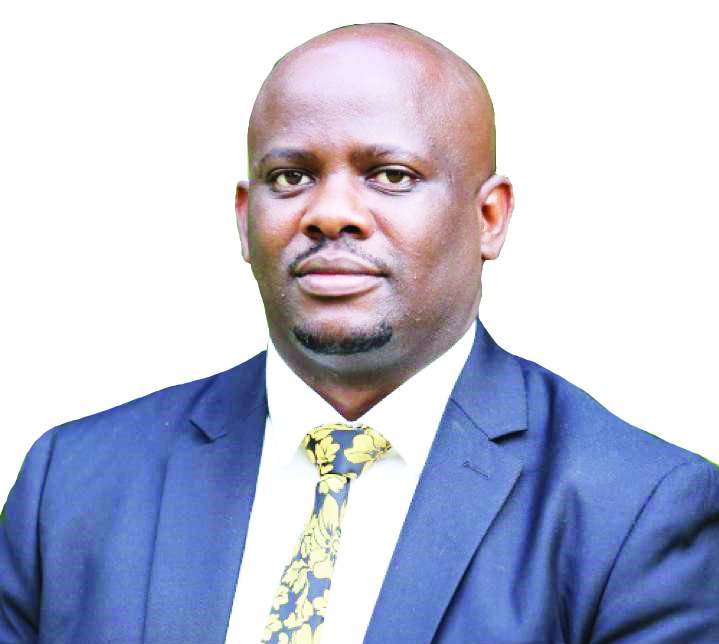Increasing urgency, resources in the fight against cancer
May 03, 2024
“In six months, I have lost over 30 people, either relatives, friends, or acquaintances to cancer. Some of them are religious leaders, senior public servants, or ordinary people, and all dying younger! This is a bit unusual! Do we have a cancer epidemic in Uganda?” read Dombo’s post.

Emmanuel Ainebyoona, senior public relations officer at the Ministry of Health

Emmanuel Ainebyoona
@
__________________
In recent times, social media platforms have been flooded with discussions surrounding the potential emergence of a cancer epidemic in Uganda, sparking inquiries about the underlying causes behind the surge in cancer-related fatalities.
This followed a social media post by the Director of Information and Publicity for the National Resistance Movement, Emmanuel Ddombo on his X account.
“In six months, I have lost over 30 people, either relatives, friends, or acquaintances to cancer. Some of them are religious leaders, senior public servants, or ordinary people, and all dying younger! This is a bit unusual! Do we have a cancer epidemic in Uganda?” read Dombo’s post.
While verifying the precise statistics in Dombo's post may prove challenging, a first-hand visit to the Uganda Cancer Institute in Mulago confirmed the troubling reality of escalating cancer cases. The corridors of the institute teemed with patients awaiting specialised care, painting a stark picture of the escalating burden of cancer within our communities.
What meets the eye at the cancer institute are the many patients seen waiting at the various specialised clinics of the Cancer institute. At the prostate clinic, many people of different ages occupied the entire waiting room and you could hardly maneuver through the congested room.
Similarly, the room where chemotherapy is administered was equally congested as patients sat beside drip stands to receive their doses of treatment.
Despite the high number of patients, I wish to applaud the Board and Director of the Uganda Cancer Institute for having improved the patient flow and environment working within the currently available resources. Unlike in the past when patients were seen lying in the compound and verandas, patients now have to wait for shades that are clean and neat.
At the radiotherapy department, patients can now get their dose of treatment as scheduled given that the government procured three Linac machines, the latest technology in administering radiotherapy treatment.
The institute now intends to phase out the use of the Cobalt 60 radiation machines whose maintenance and service are difficult and pose an environmental risk of emitting radiation once their source has malfunctioned.
However, the institute is still grappling with admission space and an inadequate budget for cancer medicines and supplies. Many patients who ought to be in admission are not admitted and some have to stay in the section where the institute has improvised tents for patients as they wait for their appointments with their oncologists.
Dr. Jackson Orem, the Director of UCI, revealed that new cancer cases surged from 6,000 to 7,000 within the span of a single year, underscoring the gravity of the situation. Moreover, the institute's annual budget of sh15b falls short of the estimated requirement of sh21b, exacerbating the challenge of medication stockouts.
To eliminate the challenge of the floor cases in the currently congested admission wards, the Cancer Institute needs a budgetary allocation of about sh57b to enable it to complete a seven-level ward complex whose construction is currently underway. So far, the institute has spent sh12b on a structure whose total contraction sum is sh69b.
A silver lining for cancer patients is the regional cancer centers that UCI is currently developing in Mbarara, Arua, Mbale, and Gulu to help save patients from traveling to Kampala for care and treatment.
Furthermore, the impending completion of the East African Centre of Excellence in Care promises to augment treatment facilities and research capabilities, heralding a new era of comprehensive cancer management.
However, as the Government plays its part in improving the infrastructure for care and treatment, Ugandans have a responsibility to prevent cancer, a non-communicable disease that is largely associated with our lifestyle.
According to UCI, the top five female cancers include; Cervical Cancer at 35.1%, Breast cancer at 18.2%, Oesophagus at 4.5%, Ovary 4.2% (n=746), Kaposi Sarcoma and Liver cancers at 3.8% and 3.7% respectively. The top male cancers include; Prostate Cancer 21.9% Oesophagus 13.2% (n=1,704), Kaposi Sarcoma 10.8%, Liver 7.7% (989), and Stomach 4.2%.
Despite the known risk factors for cancer that include lifestyle, infections, and genetics, Ugandans most especially young people continue to abuse cancer-causing substances like tobacco, shisha, and alcohol as seen in the various hangouts countrywide.
The Ministry of Health has introduced preventive interventions like immunization for Hepatitis B and Human Papillomavirus (HPV) but the uptake is low.
Furthermore, to increase physical activity, the Ministry of Health has been pushing for weekly physical activity, but still very low at household and individual levels.
The Ministry is also planning to introduce mandatory prostate cancer screening for all males aged 45 years and above.
The battle against cancer demands concerted efforts from all stakeholders, policymakers, and healthcare providers to individuals. With adequate funding, strategic interventions, and a collective commitment to prevention and early detection, we can stem this devastating disease and offer hope to countless lives.
The writer is the senior public relations officer at the Ministry of Health

No Comment